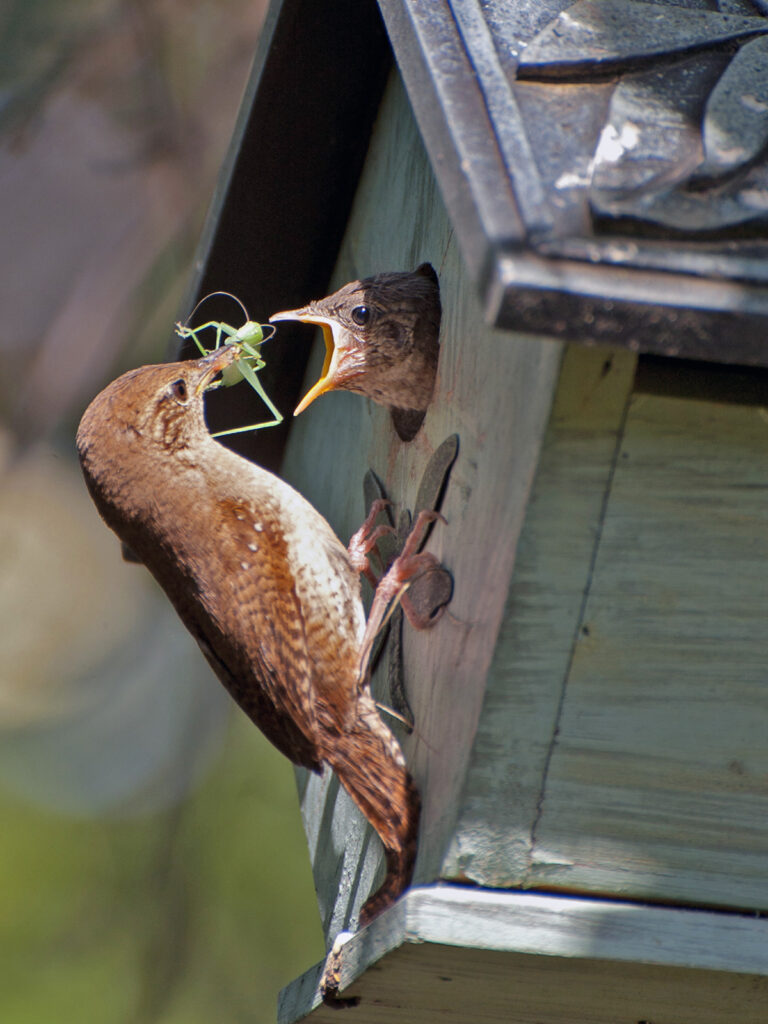
Besides insects being the foundation of the food web in general, a key reason to plant native plants is that insects are the prime source of food for most birds feeding their young. (An exception in my region is the almost-vegetarian goldfinch.)
As Doug Tallamy’s research has discovered, 96% of terrestrial birds feed their nestlings insects, not berries or seeds.
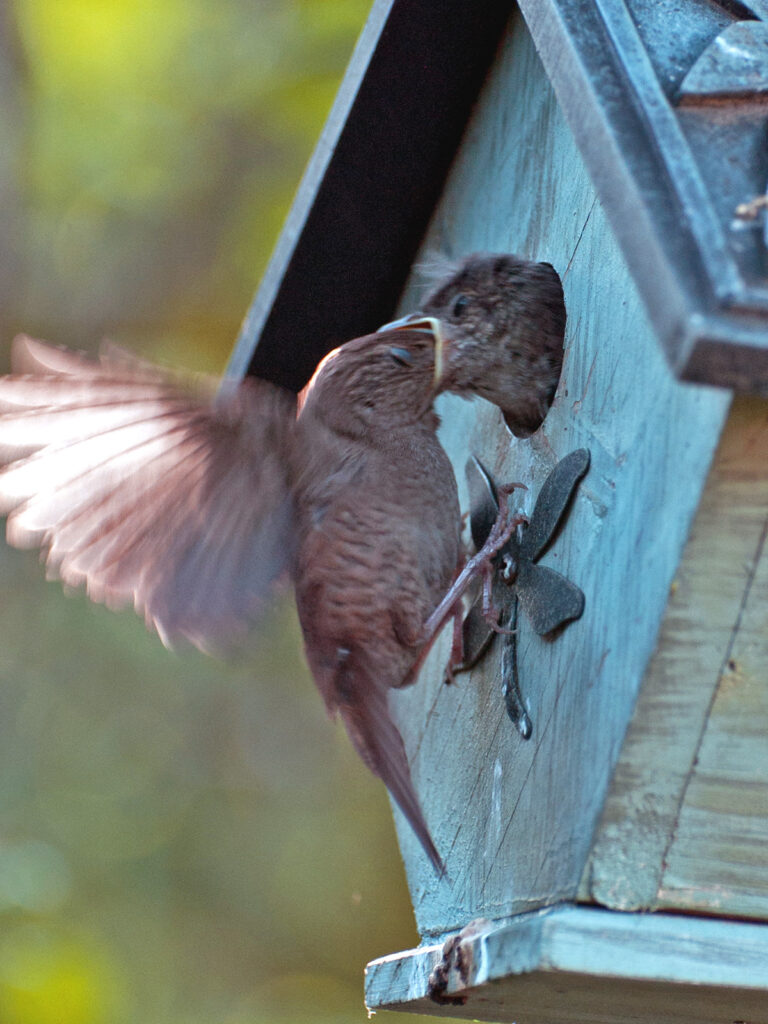
And when they go to the trouble of finding food, they make sure it gets to its destination!
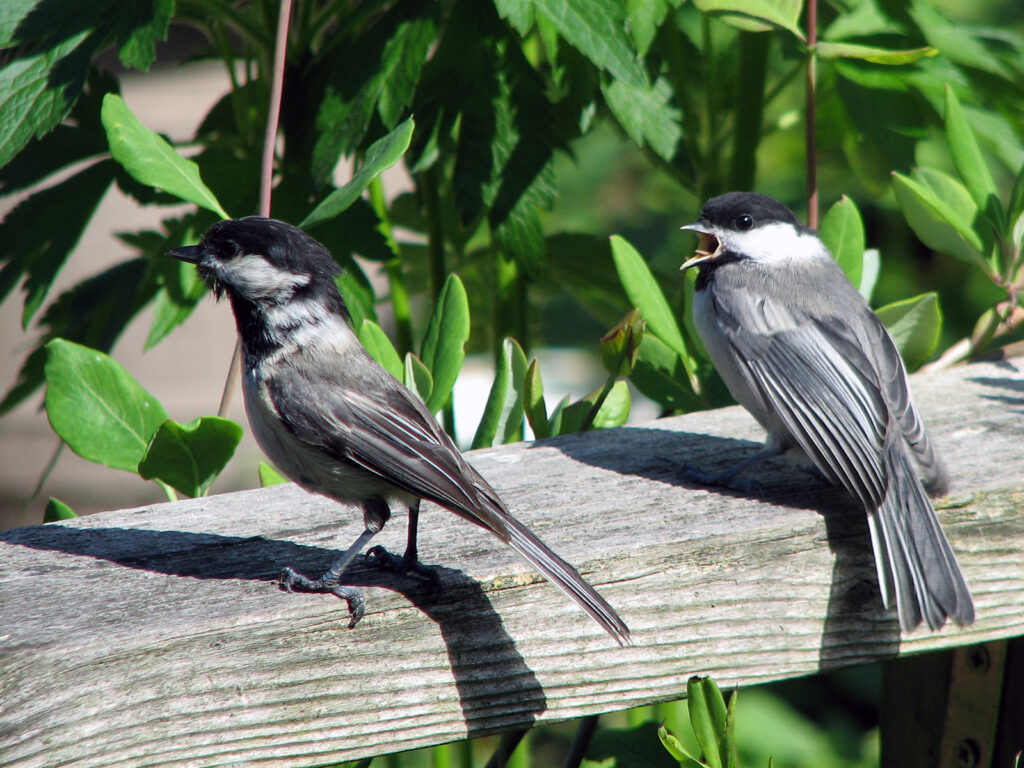
They’re voracious little creatures — demanding, too! Most human parents can identify with the frazzled look of the parent (on the left)!
And to raise a clutch of even a small species such as a chickadee requires literally thousands of caterpillars!
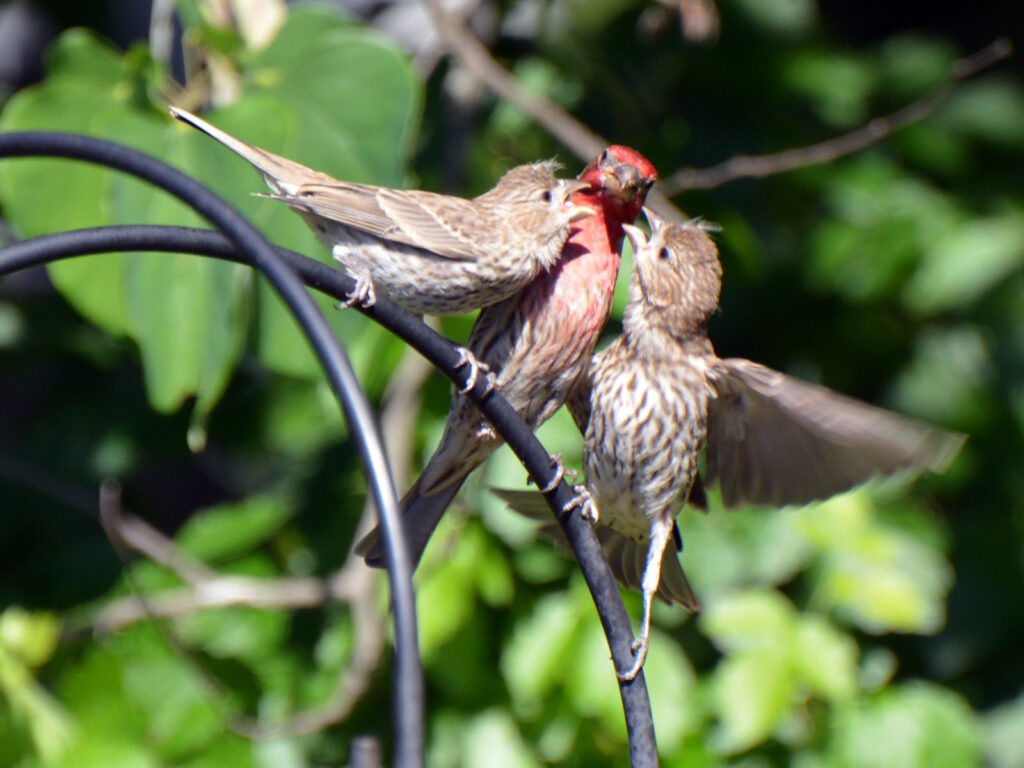
If you look closely you might be able to see the little feather tufts on the babies’ heads.
As Hilton Pond says, “No one knows for sure, but we suspect these adornments indicate to adult HOFI [house finch] these are youngsters whose insatiable appetites need tending.“
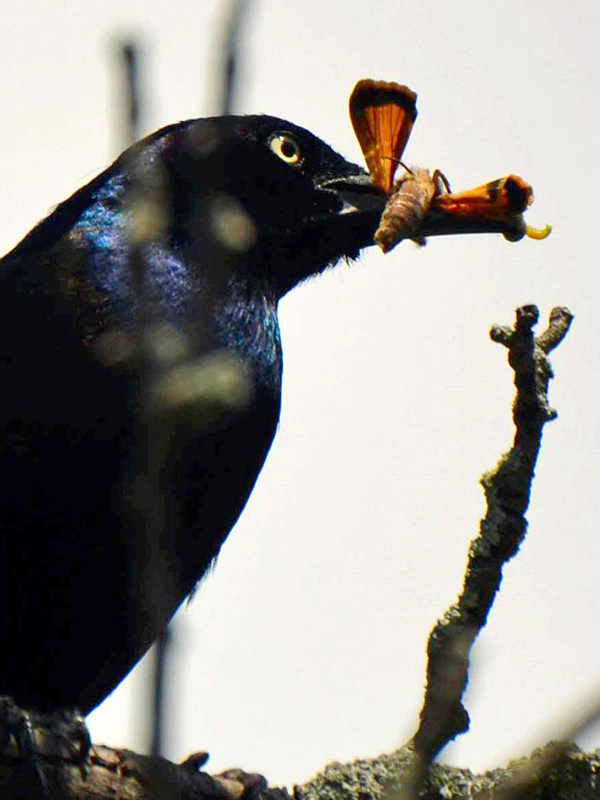
Since 90% of caterpillars need native plants, the typical suburban landscape simply doesn’t support many birds. I’m sure my native trees and native shrubs help, but we need more than just an isolated yard here and there. We need neighborhoods full of native plants (and sadly my own neighborhood definitely does not qualify).
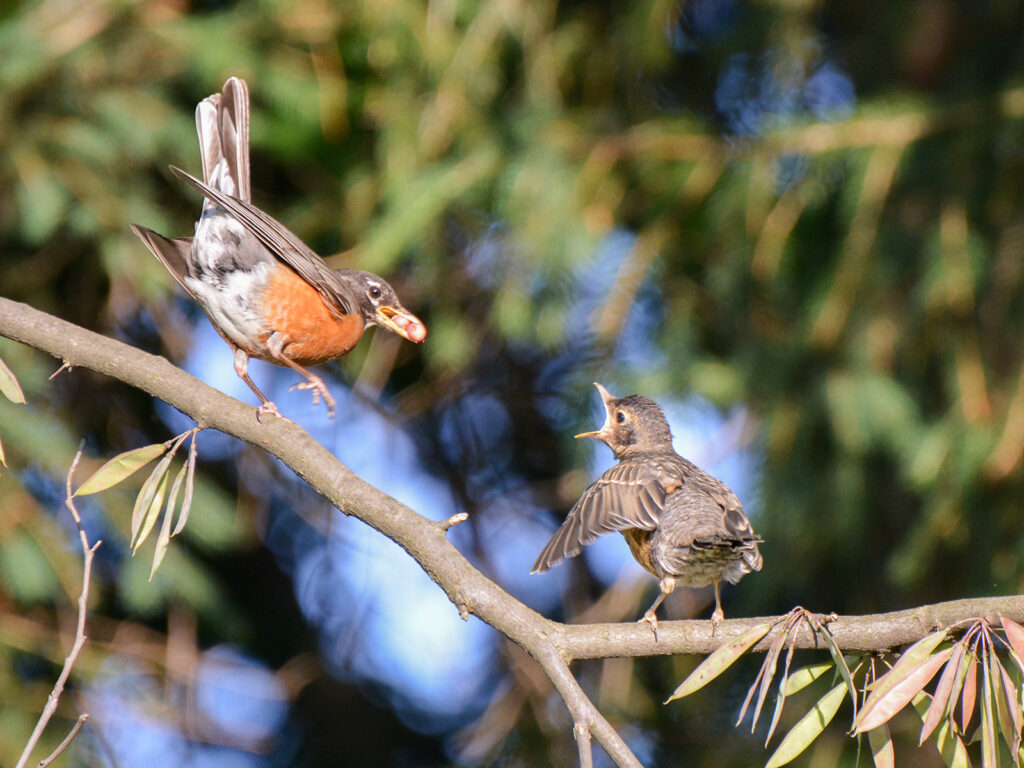
NOTE: “Nestlings” are the babies still in the nest, not yet fledged. “Fledglings” are the young birds that have left the nest. They’re fed berries etc. as well as insects.
Here, a robin is feeding its fledgling some berries.
See more birds feeding insects to their babies
Here are more photos of birds feeding insects to their babies:
What goes in must come out
Okay, people. Stop complaining about changing diapers! Bird parents have to carry out babies’ fecal sacs IN THEIR BEAKS! Some even eat the waste produced by tiny hatchlings!
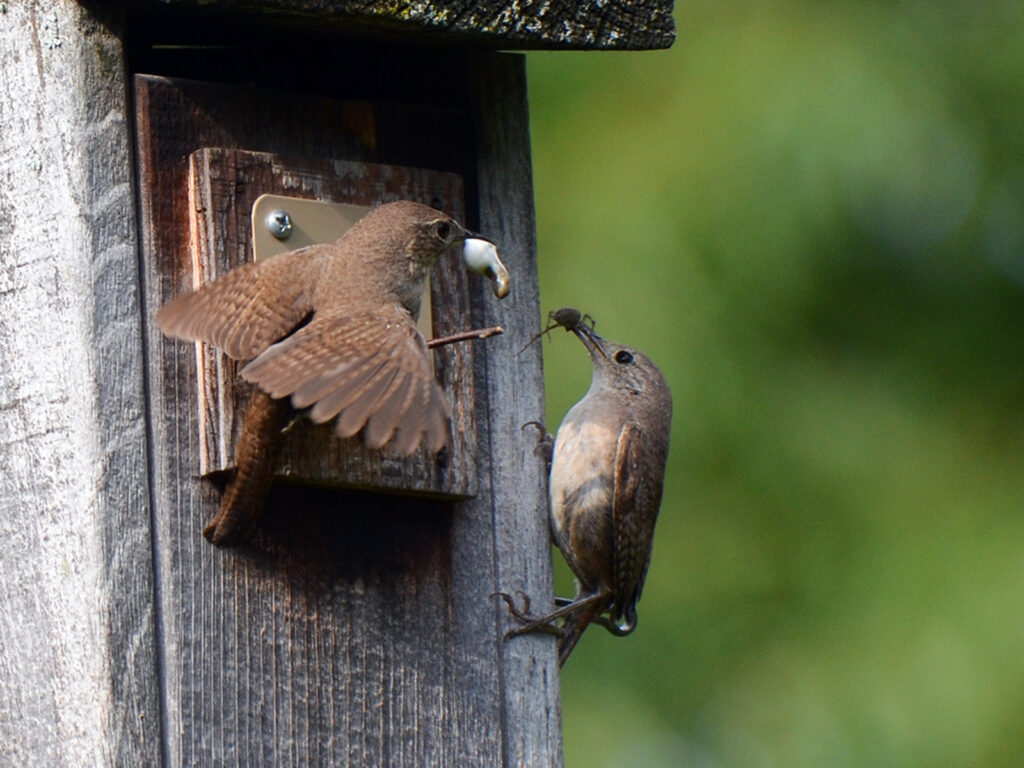
Here, one wren parent is removing a fecal sac while the other is taking insect food into the nest.
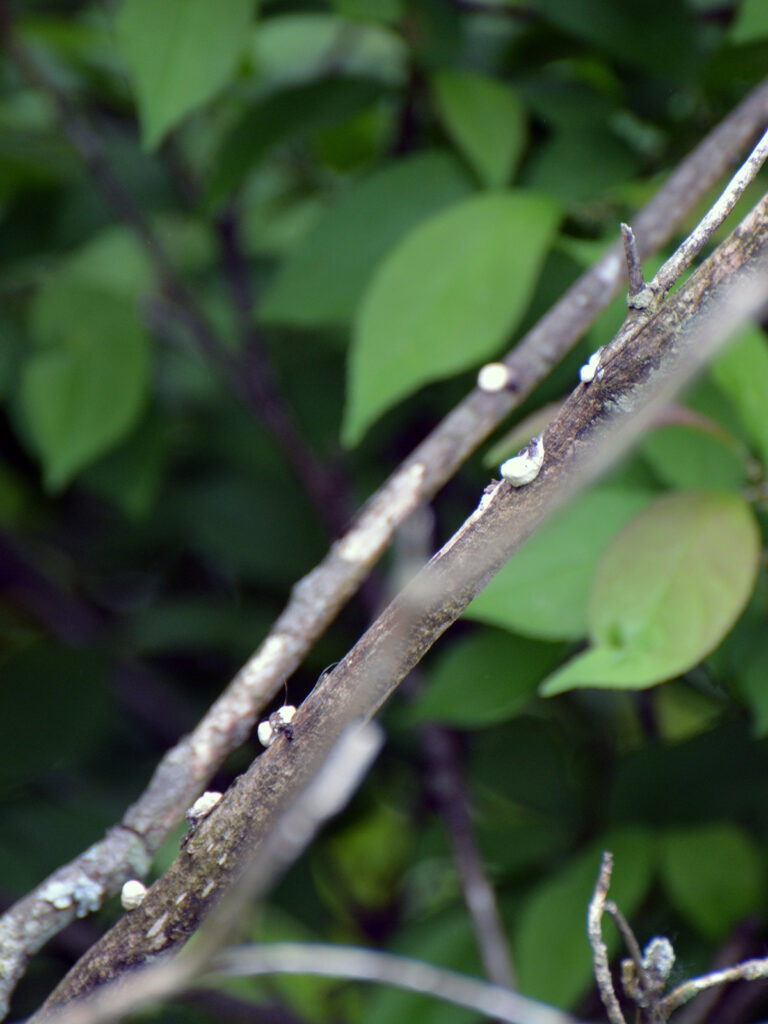
And they don’t just drop them out the nest box hole; they carry them away from the nest so predators don’t catch on. They often have a favorite spot to drop these fecal sacs.
One year, for example, they dropped them on this pagoda dogwood branch. And one year it was in our driveway. Oh, well…
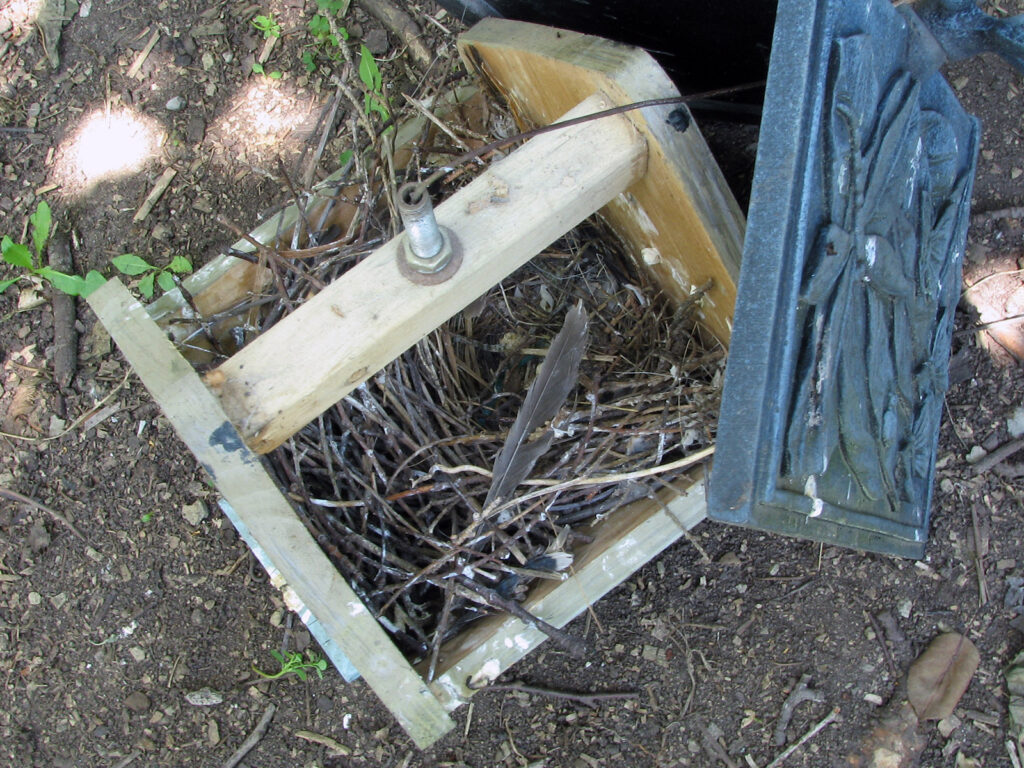
This system works remarkably well.
When you see nests after the babies have fledged, the nests are remarkably clean …
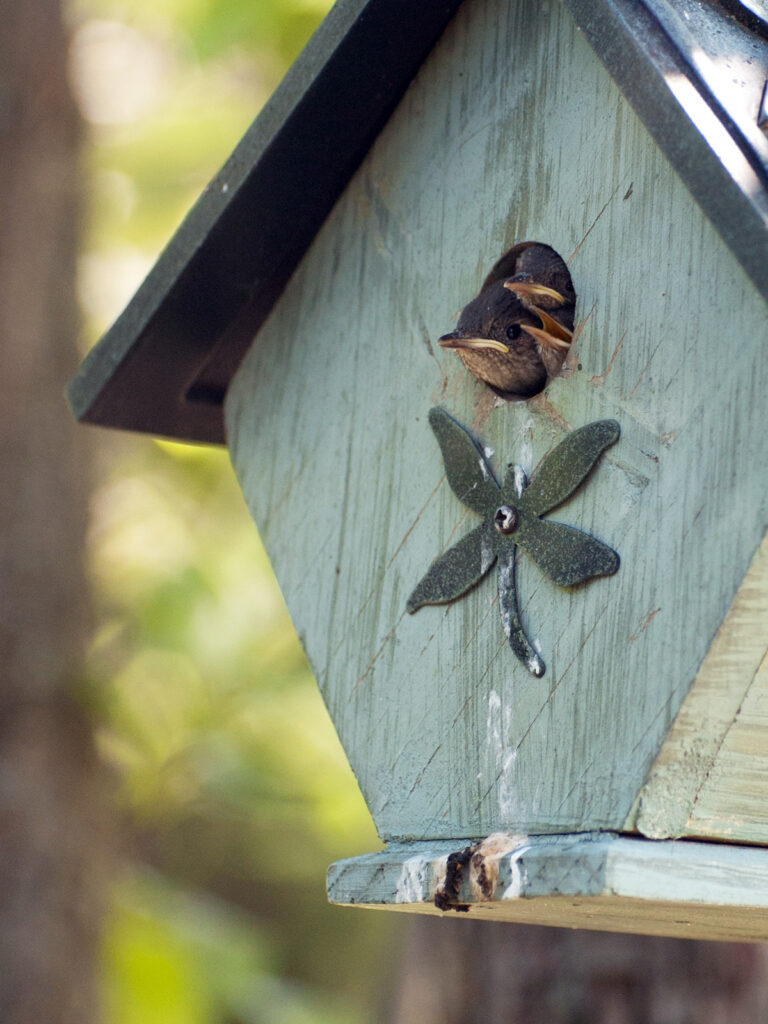
… except in this birdy version of toilet training. Sometimes the front of the nest box gets covered in bird poop because the older nestlings — like these three wren babies — just turn around and poop out the hole!
I didn’t catch them “in the act,” but you can see the results.
Of course, in a natural cavity nest situation this wouldn’t be as obvious.
Help birds feed their babies!
In our neighborhood, for the past two years people have been increasingly cutting down trees. Many of these were mature native trees that had been producing lots of insect food for birds for decades. Perhaps due to the pandemic, many of these trees are being removed in order to install swimming pools and other hardscaping, sometimes covering over all of the soil so it will be difficult to plant anything in the future. “Soil sealed is soil lost” as they say. Some people say don’t like to rake leaves. And it’s so hard to produce that all-important perfect lawn under trees!
Compared to the past, we’ve noticed some birds, such as this cardinal, seem more desperate for mealworms to feed their babies. I fear there just isn’t enough food any more.
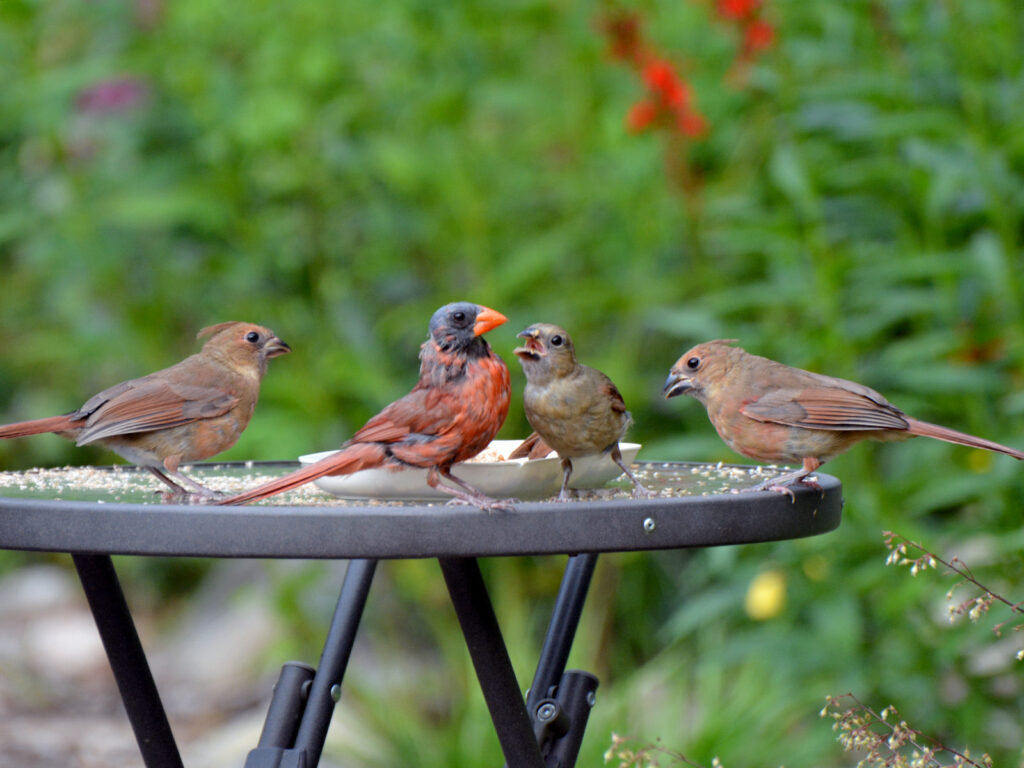
As this haggard-looking cardinal father would attest, it’s hard work feeding baby birds!
We’re trying to help make it easier — in fact, make it possible at all — for birds to feed their babies by planting lots of native plants that produce the insect food they need! But our yard can’t do it all!
Resources
- National Wildlife Federation:
- Chickadees show why birds need native plants by Doug Tallamy
- Cornell Lab of Ornithology:
Reflections
Caterpillars are Mother Nature’s equivalent of mother’s milk and Gerber’s baby food, the ideal and irreplaceable food needed for most baby songbirds to survive. They’re soft and squishy and full of fat and protein and carbohydrates. And when they aren’t available, many baby birds starve.
~ Kate Marianchild, Secrets of the Oak Woodlands
